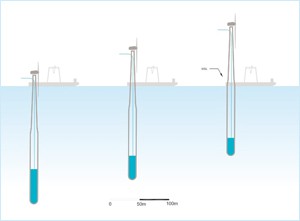A team from the U.S. including the U.S. Department of Agriculture (USDA), Growth Energy, U.S. Grains Council (USGC) and the Renewable Fuels Association (RFA) recently returned from a clean energy mission to India. Led by USDA Undersecretary for Farm and Foreign Agricultural Services Micheal Scuse, the group met to discuss opportunities for developing clean energy solutions, technologies and policies. An additional goal of the mission was to strengthen the level of cooperation and coordination between the ethanol industries of the two countries.
 During a series of meetings that involved ethanol producers, oil companies and government officials, the U.S. participant group of seven received an in-depth look at the local industry’s situation and outlook. There were extensive discussions on India’s economy, political environment, energy sector, and the role of government policy as a driver of the ethanol industry’s growth.
During a series of meetings that involved ethanol producers, oil companies and government officials, the U.S. participant group of seven received an in-depth look at the local industry’s situation and outlook. There were extensive discussions on India’s economy, political environment, energy sector, and the role of government policy as a driver of the ethanol industry’s growth.
“Macroeconomic factors like population growth, continuing urbanization and increases in disposable income mean India is poised to use more gasoline and diesel fuels,” said USGC Past Chairman Ron Gray, who was part of the group representing the U.S. industry. “Given the negative effect that petroleum-based gasoline has on air quality, we feel that the expanded use of ethanol as an oxygenate can help India reduce smog and carbon emissions in this rapidly growing developing country, particularly in its cities.”
Ed Hubbard, general counsel for RFA said of the trip, “America’s commitment to using ethanol in our fuel has made it possible for our nation’s busiest cities to dramatically reduce levels of smog and other harmful tail-pipe emissions. By sharing our experiences with our friends here in India, we believe we can help them significantly improve the country’s air quality.”
In 2014, India imported $86 million of industrial ethanol mostly from the U.S. and Brazil and USGC expects imports to rise potentially researching $150-200 million in 2015. Even accounting for this level of growth, the U.S. ethanol industry believes there is still room for growth, especially in the transportation market. According to a press release sent out from the U.S. delegation, this view was echoed by India’s sugar and ethanol sector during last week’s meetings, with the country seeking ways to increase their blend rates from current low levels as a means to improving air quality while supporting India’s sugar producers.









